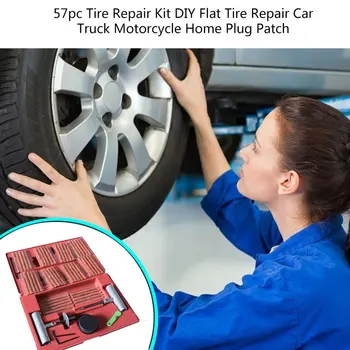Calculate Out-The-Door Price
close
× ‹
All fields are required
Submodel
Select TPMS OptionTPMSTPMS: NOTPMS: YES
WHAT IS TPMS?Enter Zip Code WHY DO WE ASK ABOUT YOUR ZIPCODE?
ZIP code is needed for local pricing.">Why?
Cross Section
Aspect Ratio
Rim Diameter
Enter Zip Code Why?
7980 S Broadway
Littleton, CO
303.515.7308
Most stores are open nights and weekends
Directions
Store Hours:
| Day(s) | Hours |
|---|---|
| MON-FRI: | 7:00am-7:00pm |
| SAT: | 7:00am-6:00pm |
| SUN: | 9:00am-5:00pm |
| CHRISTMAS EVE: | 7:00am-4:00pm |
| CHRISTMAS DAY: | Closed |
Store Details Change Store Find a Store
Schedule An AppointmentLearn more about Oil Changes
7980 S Broadway
Littleton, CO
303.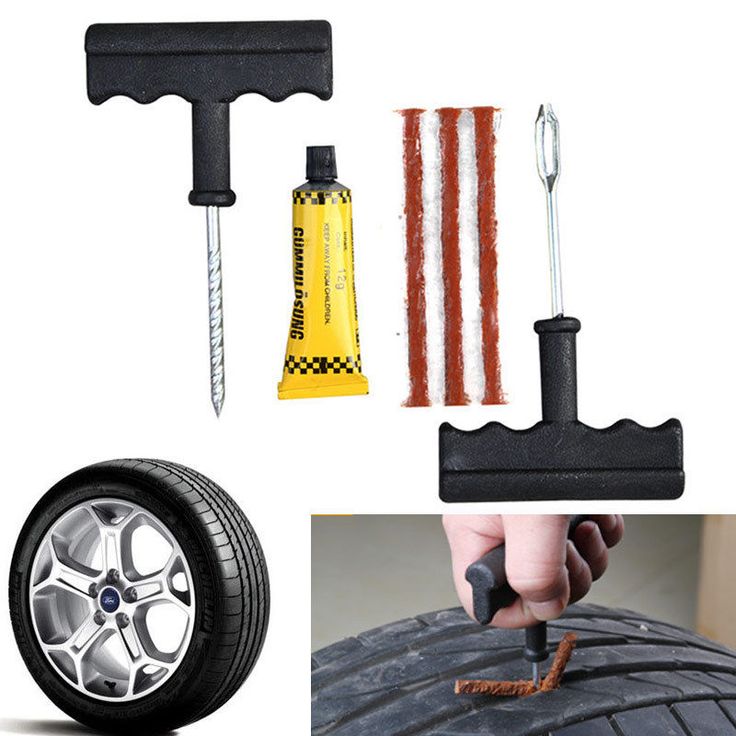 515.7308
515.7308
Most stores are open nights and weekends
Directions
Store Hours:
| Day(s) | Hours |
|---|---|
| MON-FRI: | 7:00am-7:00pm |
| SAT: | 7:00am-6:00pm |
| SUN: | 9:00am-5:00pm |
| CHRISTMAS EVE: | 7:00am-4:00pm |
| CHRISTMAS DAY: | Closed |
Store Details Change Store Find a Store
Schedule An AppointmentLearn more about Brake Service
All fields are required
Engine
Enter Zip Code Why?
All fields are required
Submodel
Enter Zip Code Why?
FIRESTONE HAS BEEN THE NATION'S LEADING TIRE PROVIDER FOR MORE THAN A CENTURY.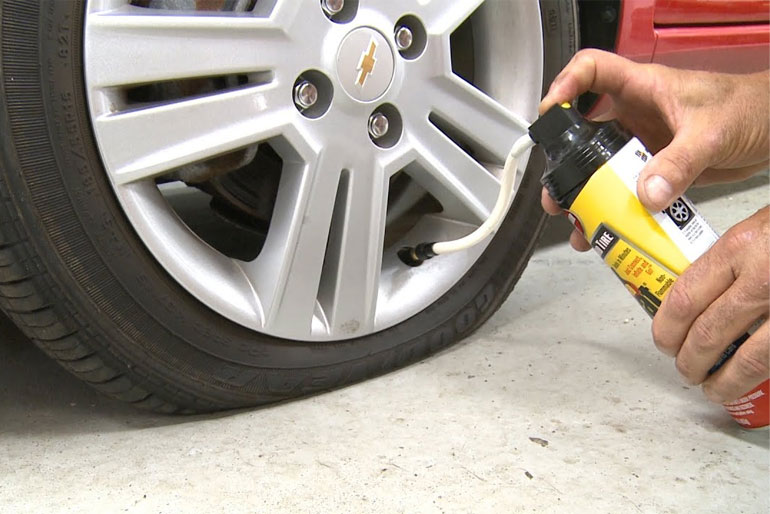
It's a tough road out there, and your tires bear the brunt of potholes, broken glass, nails, screws, and anything else that can puncture a tire. Firestone Complete Auto Care's flat tire repair services are the best in the business. We've been repairing tires since 1926, and we take pride in repairing America's tires. When tire damage strikes, come to Firestone Complete Auto Care–the tire repair shop you can trust.
If you suspect something is wrong with your vehicle's tires, don't hesitate to come into a Firestone Complete Auto Care near you. If your Tire Pressure Monitoring System (TPMS) light is on, you've hit something on the road, your tire is losing air, or maybe something just doesn't feel quite right, bring it in. One of our expert technicians will take a look and tell you if you need to repair or replace your tires.
Driving on a damaged tire can lead to additional (and more costly) rim damage and repairs, so it's best to have your tires examined at the first sign of trouble.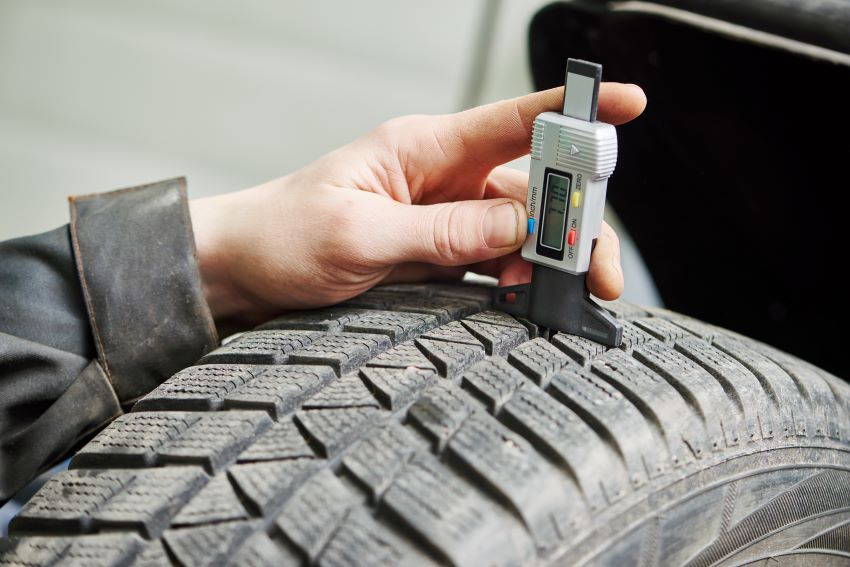 The solution might be as simple as needing one of our patch plugs if the tire puncture is addressed early on. In other cases, a leaking valve stem or valve core may need to be replaced with a new one or the TPMS sensor needs to be reprogrammed or replaced. Visit your nearest Firestone Complete Auto Care, and we'll take care of you and your vehicle tire repairs.
The solution might be as simple as needing one of our patch plugs if the tire puncture is addressed early on. In other cases, a leaking valve stem or valve core may need to be replaced with a new one or the TPMS sensor needs to be reprogrammed or replaced. Visit your nearest Firestone Complete Auto Care, and we'll take care of you and your vehicle tire repairs.
Schedule An appointment
Tire Repair & Patching/Plug
If your tires still have life left in their tread and are not over 10 years old, Firestone Complete Auto Care maybe be able repair or patch & plug them to get you back on the road quickly. Keep in mind not all tire damage can be patched if the puncture is too big.
Tire Replacement
Over time, the tread on your tires wears down, leading to compromised traction on the road and potentially dangerous driving conditions. Tires generally need to be replaced every 25,000 to 50,000 miles, depending on vehicle manufacturer recommendations and driving habits.
Tire Rotations & Balancing
When you have your tires rotated, you help increase the life of your tires by helping reduce uneven wear. Most vehicle manufacturers recommend a tire rotation about every 5,000 miles or at the manufacturer-recommended mileage. Tire balancing helps ensure weight is evenly distributed around your tires. It's necessary about every 5,000 miles or as recommended by your manufacturer. Balancing can lead to a smoother ride, less tire wear, and reduced strain on the drivetrain. When you think tire balancing, think safe, smooth, and efficient driving.
Wheel Alignments
It's best to have your alignment checked every 6,000 miles or twice a year. Even one misaligned wheel can cause the steering wheel to be off center and can lead to premature wear and tear on your vehicle over time. Keeping everything properly aligned ensures a smoother ride for you and a longer life for your tires.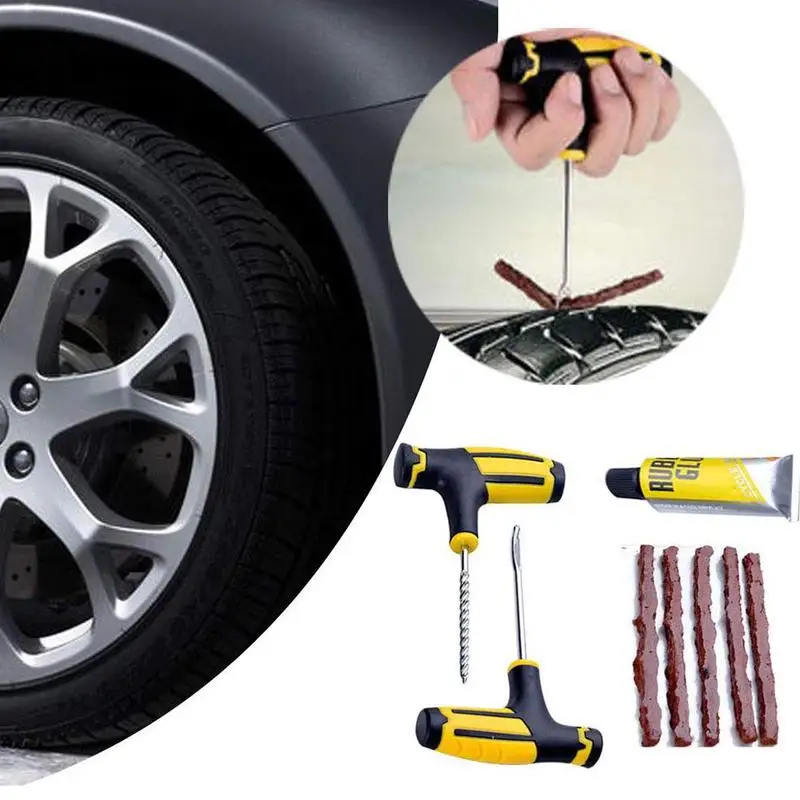
Flat Repair
A flat or leaking tire can leave you stranded on the side of the road or lead to a situation where you lose control while driving. Take care of flat or leaking tires as early as possible to extend tire lifespan and ensure your tire doesn't leave you stranded.
Schedule An Appointment
All fields are required
Engine
Zip Code Entry Why?
Flat tires rarely happen at ideal times. Let Firestone Complete Auto Care help you with these answers to frequently asked flat tire questions.
To ensure a safe drive that doesn’t damage your rims or create more expensive repairs, change your flat tire with your spare tire before coming into your local Firestone Complete Auto Care center for flat tire repair.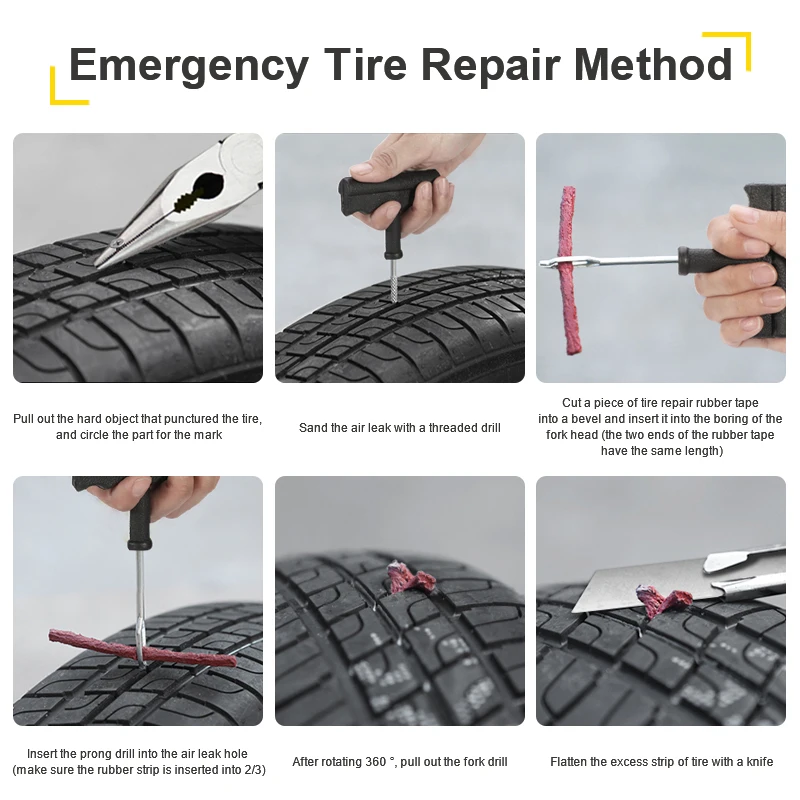
It’s tempting to replace just the tire that's damaged, but replacing one tire at a time can present challenges down the road since the one tire will have a different tread depth and thus different accelerating, braking, and cornering abilities than all of the others.
Few things are more inconvenient than a flat tire —except back-to-back flat tires. Learn the reasons why you keep getting flat tires and what you can do to help prevent flat tires from deflating your spirits!
If your vehicle hits a pothole in the road, you may experience steering and suspension system misalignment and/or damage, tire punctures, bent rims, and more. When your vehicle experiences a sudden jolt from a pothole run-in, timely inspection is highly recommended.
Pothole damage may not be obvious right away, but it can wreak havoc on your entire car if it’s not addressed quickly and fixed right the first time.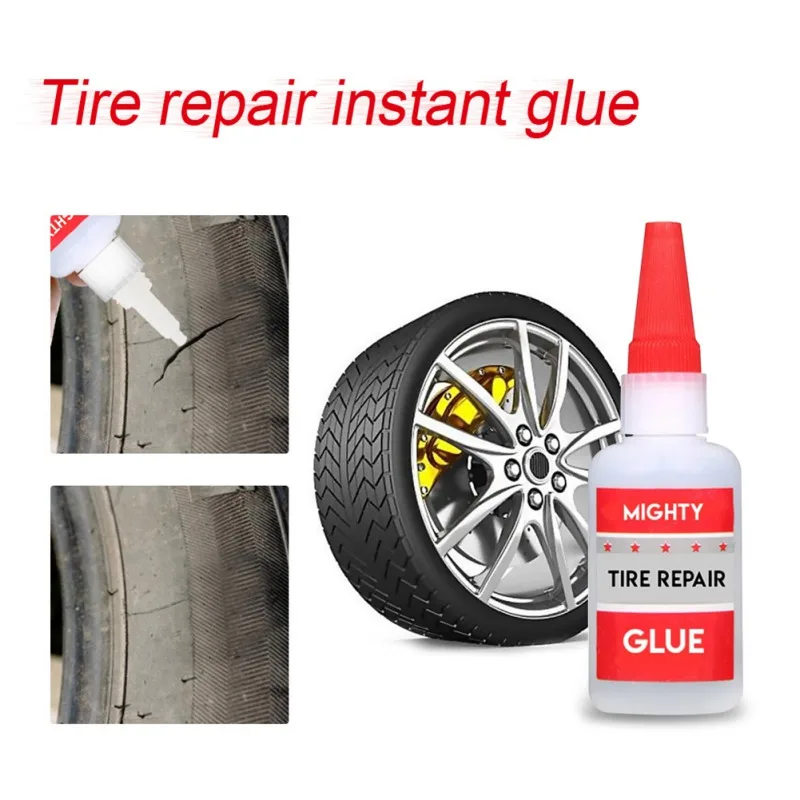 If you've had a recent run-in with a pothole, head to your local Firestone Complete Auto Care for a Complete Vehicle Inspection to check for any issues.
If you've had a recent run-in with a pothole, head to your local Firestone Complete Auto Care for a Complete Vehicle Inspection to check for any issues.
A tire plug is a quick fix for a tire that's leaking air from a nail or similar object that has punctured the tire. A tire plug fills the hole of the tire but is not reliable without a tire patch and not recommended to use alone. A patch is applied to the inside of the tire to further prevent an air leak and helps hold the plug in place. This allows a tire with ample useful life left in it to hold air reliably and keep you on the road for longer.
Run flat tires allow you to drive on a flat tire for a limited time with lesser risk than non-run flat tires. A Run Flat tire could be repaired if a nail or object is caught before tire damage occurs. However, if the tire is permanently damaged, it is required to replace a Run Flat tire with a new one.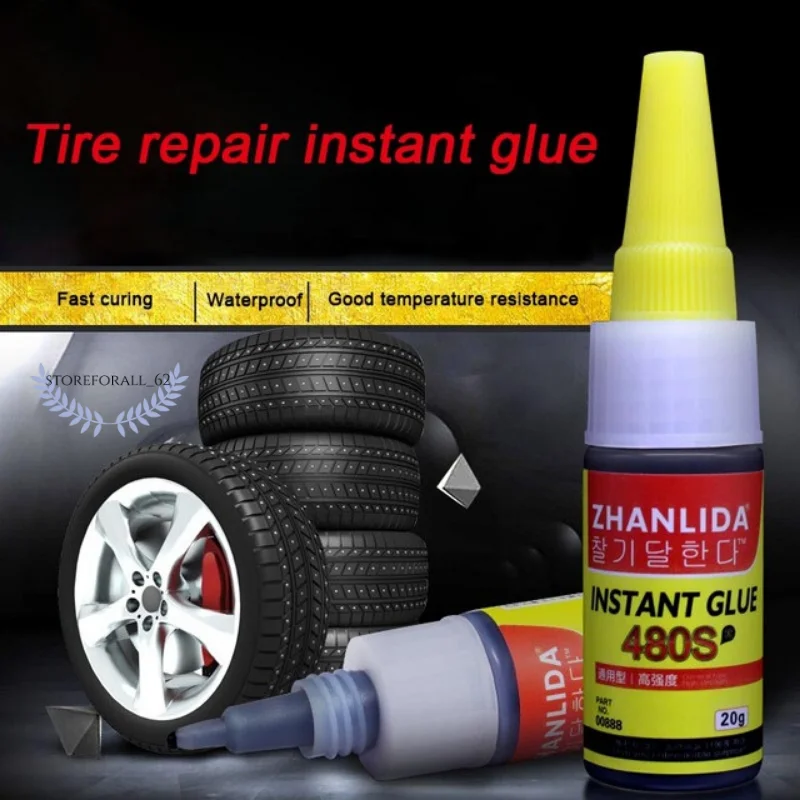
The Tire Pressure Monitoring System light will illuminate if tire pressure is too low or part of the TPMS system has malfunctioned. Important TPMS warning light behavior:
Looking for the closest flat tire repair shop? Come to Firestone Complete Auto Care for a tire plug & patch or other tire repair service today!
Read More
Regular tire rotations can help prevent uneven tread wear and help your tires last longer.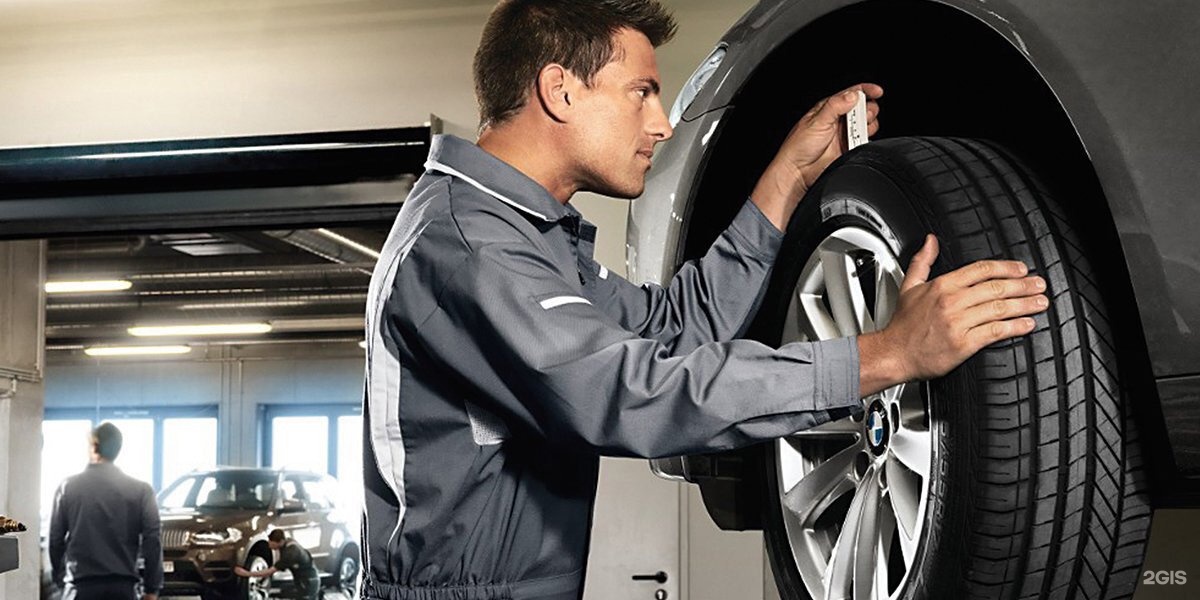 Schedule a tire rotation appointment at a Firestone Complete Auto Care near you today.
Schedule a tire rotation appointment at a Firestone Complete Auto Care near you today.
Read More
Knowing when to replace tires is as easy as measuring tire tread depth. Learn more about this important measurement and visit Firestone Complete Auto Care!
Read More
Tires
Need a fresh set of winter tires but don’t know what to look for? We have you covered. Read on to learn about tread patterns, tire compounds, ratings, and more!
Read More
Tires
What is backspacing in wheels? What about offset? Are they the same or completely separate things? Firestone has the answers you're looking for. Learn more.
Learn more.
Read More
Tires
What are the symptoms of unbalanced tires, and do yours need balancing? Learn everything you need to know about this often-overlooked aspect of car maintenance.
Read More
LOAD 3 MORE
SHOWING 6 OF 12
View More Articles
{{storeNumber}}
{{storeName}}
{{link-icon "Call Us" mobileCallLink null "call-cta"}} {{link-icon "Directions" directions "_blank" "directions-cta"}}
{{address}}
{{city}}, {{state}} {{zip}}
{{#if activeFlag}} {{#ifCond mystore "or" myPreferredStore}} {{#ifCond storeType 'eq' "TPL"}}
*Call store for appointment {{phone}}
{{else}} {{#if onlineAppointmentActiveFlag }}
{{#if myPreferredStore}}
{{else}}
*Call store for appointment {{phone}}
{{/if}} {{/ifCond}} {{else}} {{#ifCond storeType 'eq' "TPL"}}
*Call store for appointment {{phone}}
{{else}}
Schedule Appointment {{#if onlineAppointmentActiveFlag}} {{else}}
*Call store for appointment {{phone}}
{{/if}}
{{/ifCond}} {{/ifCond}} {{else}}
*Temporarily Closed Due To: {{temporarilyClosedReason}}
{{/if}} {{#if isMilitaryStore}}
*This location is on an active US military base.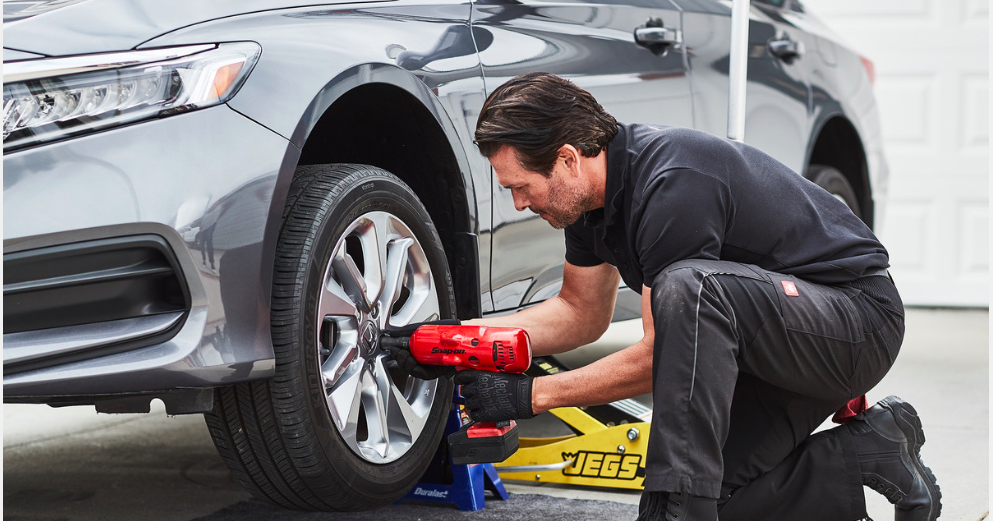 You may need military ID to access the location.
You may need military ID to access the location.
{{/if}}
{{#ifCond count 'eq' "3"}} Show More Stores {{/ifCond}}
Shop Now
Automotive or Commercial? The choice is yours. Both Loaded TECH 100 Cabinets ship complete with everything you need to perform proper tire repairs. The Automotive Tire Cabinet T100CCA and the Commercial Tire Cabinet T100CCC are the perfect way outfit a new shop, update your existing tools or equip a new service technician.
Shop Now
The tire and wheel authority that technicians around the world trust. Because everything is riding on the quality of your tire repair.
Shop Now
Get a free all-access pass to all of our online tire repair training videos. No credit card. No obligation. Try TECH University FREE for 12 Months.
Sign Up Today!
TECH is the global tire & wheel authority that revolutionized the industry with the creation of cold vulcanization technology. That legacy of innovation continues today with TECH’s world-class lineup of tire repair and wheel service products. TECH’s complete line of repairs, tools and equipment enables technicians worldwide to get everything from passenger cars to commercial trucks to off the road equipment rolling again. TECH is ISO 9001:2015 certified and an approved GSA government bid contractor. TECH…The Global Tire and Wheel Authority Technicians Trust!
One-touch operation, auto-on upon sensing pressure!
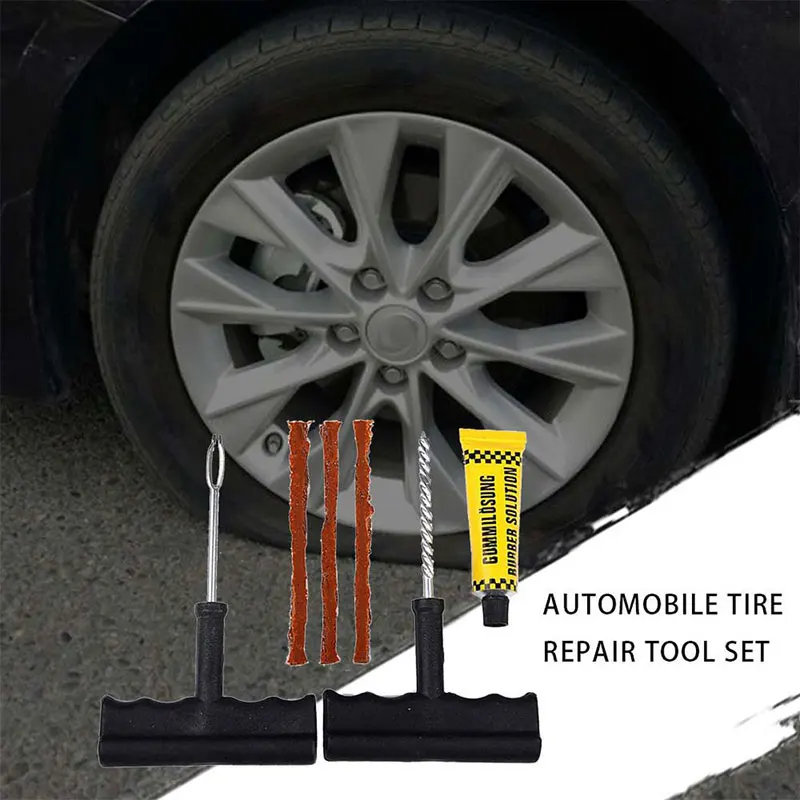
PURCHASE TODAY
Half the size – Twice the Bead Seating Power!
PURCHASE TODAY
No air hoses, No cords! Do Tire Repairs Anywhere with Milwaukee Cordless Power Tools
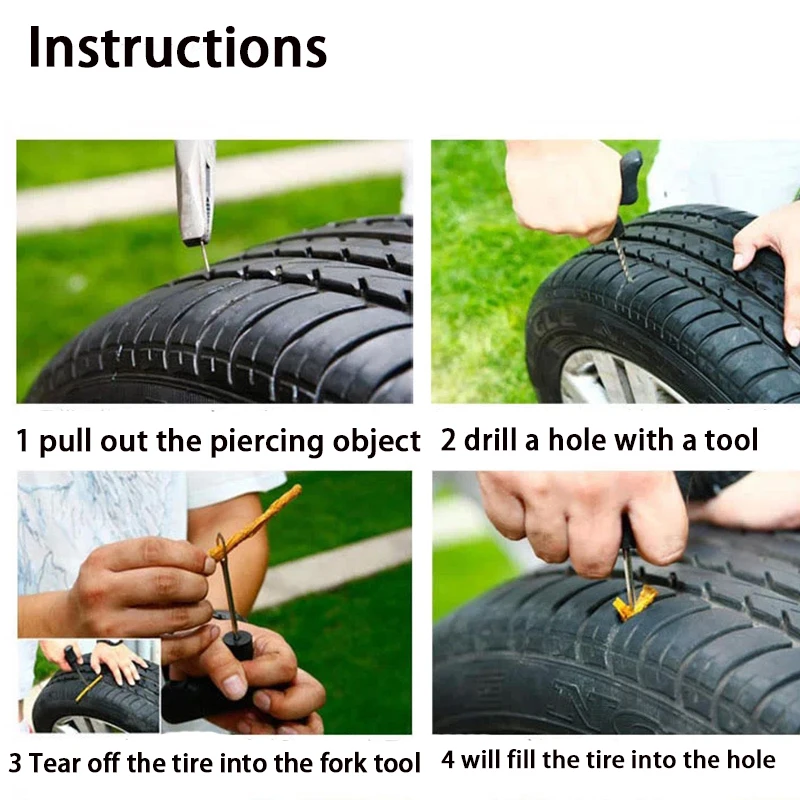
PURCHASE TODAY
Quickly and Easily Add The Right Amount of Balancing Beads to Any Size Tire!
PURCHASE TODAY
In Stock and Ready To Ship!
PURCHASE TODAY
In Stock and Ready To Ship!
 Sensor Warranty.
Sensor Warranty.PURCHASE TODAY
TECH now has a complete library of tire and wheel repair training videos available online. For only $50, get an annual subscription to train all of your service technicians.
Plus, the first 100 subscribers can receive a 25% discount by using the code TRC25!
If you have any questions, contact your TECH Distributor or reach the TECH Training Team at [email protected].
Learn More
Streamline your inventory management with TECH’s TPMS Replacement Part Starter Kit!
Covers the most popular vehicles.
Total of 64 valves and TPMS sensor service kits.
DOWNLOAD FLYER
PURCHASE TODAY
TECH produced tire repairs are endorsed and are used by the world’s largest tire manufacturers/retreaders and their subsidiaries.
Shop Now →
TECH pioneered the chemical vulcanization process over 80 years ago and offers a complete range of specialty chemicals.
Shop Now →
TECH’s complete line of service tools and equipment are designed specifically to meet the needs of tire technicians around the world.
Shop Now →
TECH offers a comprehensive line-up of wheel and tire supplies for virtually every application.
Shop Now →
TECH™ Tire Repairs products are trusted in many industries and tire applications from passenger tires to agriculture and ATVs.
Click on the image to find the right TECH™ Tire Repair products for your tire >>
Learn More
TECH™ provides all of the products needed to complete a proper tire repair that is certified by global tire manufacturers.
Learn more about our global brand, and how we impact the 4r future
Visit TRC
Photo: Mikhail Tereshchenko / TASS
adv.rbc.ru
See also
Nail, rebar or sharp stone - sometimes you can damage a tire almost from scratch. First of all, the scale of damage is important, and often rubber can still be repaired. Most often, motorists turn to tire shops for repairs in the middle of autumn or spring - just in the season of replacing summer tires with winter tires and vice versa. In order not to stand in lines, it is worth knowing exactly when to go to the tire shop and when to go to the store. nine0003
First of all, the scale of damage is important, and often rubber can still be repaired. Most often, motorists turn to tire shops for repairs in the middle of autumn or spring - just in the season of replacing summer tires with winter tires and vice versa. In order not to stand in lines, it is worth knowing exactly when to go to the tire shop and when to go to the store. nine0003
The most common "injury" to rubber is a puncture, and it can most often be repaired. Professionals in the nearest service will do it much faster, and your hands will remain clean. But if the puncture caught you in a deserted place, and there is a pump and a tire repair kit with harnesses in the trunk, you can patch up the tire yourself. Most often, when repairing the front tires, the wheel can not even be removed, it is enough to turn the steering wheel in the right direction and find the puncture site.
First, the hole is cleaned with a helical awl, the repair harness is smeared with glue and tucked into the eye of the awl, after which it is inserted into the tire hole. With a sharp movement, the tool is removed, and the tourniquet remains inside and securely clogs the hole. The tails are cut with a knife, but it is recommended to leave about 20 mm. After that, the tire can be inflated and the pressure checked. nine0003
With a sharp movement, the tool is removed, and the tourniquet remains inside and securely clogs the hole. The tails are cut with a knife, but it is recommended to leave about 20 mm. After that, the tire can be inflated and the pressure checked. nine0003
Repair with tourniquets is not considered long-term, because after some time they dry out and begin to let air through. A more advanced puncture repair method is vulcanization. The hole is sealed with an elastic patch, and the funnel at the puncture site is filled with a special compound. A vulcanizer is put on top, which heats the patch and solders the excess.
Under service conditions, the puncture is also repaired with cord fungus. The puncture site is processed and drilled to roughen. Everything is smeared with glue, after which a fungus is introduced from the inside of the tire, its cap is rolled, and the excess legs are cut off from the outside. nine0003
Photo: PA Images / TASS
A puncture can also be repaired with sealant.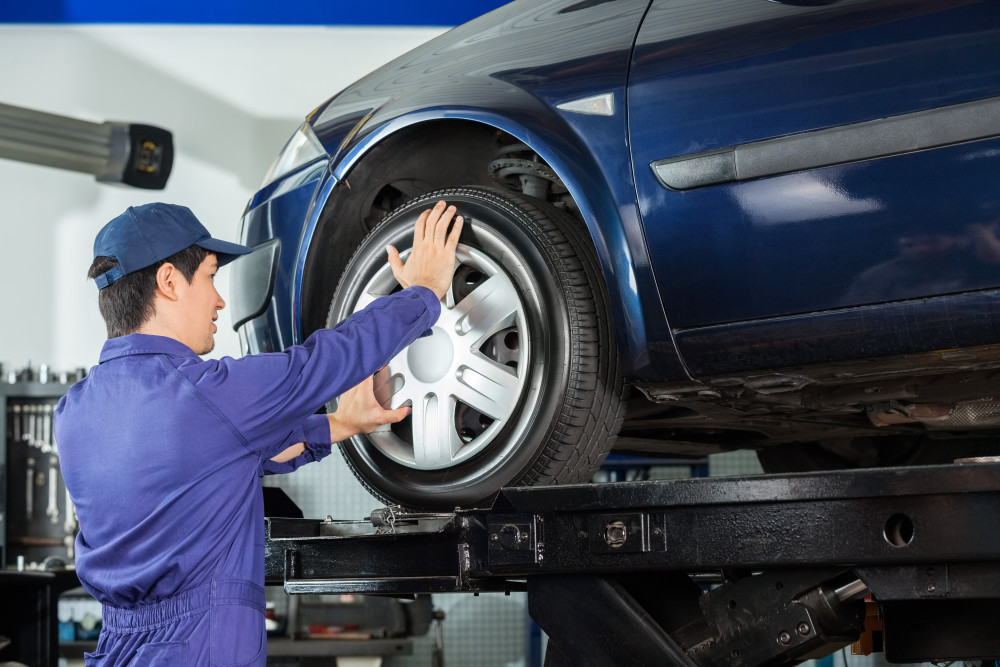 Many car manufacturers with run flat tubeless tires put compressor repair kits in the car instead of a spare tire - a bottle of pressurized sealant. The car is raised on a jack, after which the sealant is pumped into the damaged wheel through the nipple. Next, you need to spin the wheel and pump it up. After repair, the car should be driven a couple of hundred meters to check the tightness of the tire. If it has not recovered, the procedure is repeated. nine0003
Many car manufacturers with run flat tubeless tires put compressor repair kits in the car instead of a spare tire - a bottle of pressurized sealant. The car is raised on a jack, after which the sealant is pumped into the damaged wheel through the nipple. Next, you need to spin the wheel and pump it up. After repair, the car should be driven a couple of hundred meters to check the tightness of the tire. If it has not recovered, the procedure is repeated. nine0003
It happens that a self-tapping screw or a nail closes the hole in the tire, remaining inside. Do not rush to pull it out - until the pressure drops, you can safely get to the service for vulcanization. Sometimes the wheel begins to blow off a few weeks after the self-tapping screw got into it. Therefore, it is better to check tire pressure periodically, and if the pressure sensor lights up, you should at least visually inspect the tire for a nail head.
A bump or bulge most often occurs on the side of a tire after hitting an obstacle or hitting a hole at speed. From the impact, the sidewall carcass threads are damaged, the tire ceases to hold the load and pressure, swelling appears. Any small bump eventually turns into a larger one, and with such a defect, the wheel can burst at any time. This is a direct safety hazard because a sudden flat tire can cause loss of control and a road accident. nine0003
From the impact, the sidewall carcass threads are damaged, the tire ceases to hold the load and pressure, swelling appears. Any small bump eventually turns into a larger one, and with such a defect, the wheel can burst at any time. This is a direct safety hazard because a sudden flat tire can cause loss of control and a road accident. nine0003
Some bulges can be repaired, but no patch will ever restore a tire to factory stiffness. The ideal option in this case is to replace the tire. If a hernia has appeared on the tread, then you can extend the life of the tire with the help of cord patches - ready-to-use patches with an adhesive layer. But if swelling is found on the sidewall, the likelihood of repair is minimal, the wheel is easier to change. Blisters on low profile tires are generally not repairable.
Only car service professionals can repair a side cut. Cord patches will be needed to repair the damage, but after some time the wheel will still have to be changed. This method will work only if the gap is not in the shoulder area of the tire, then no one will repair it.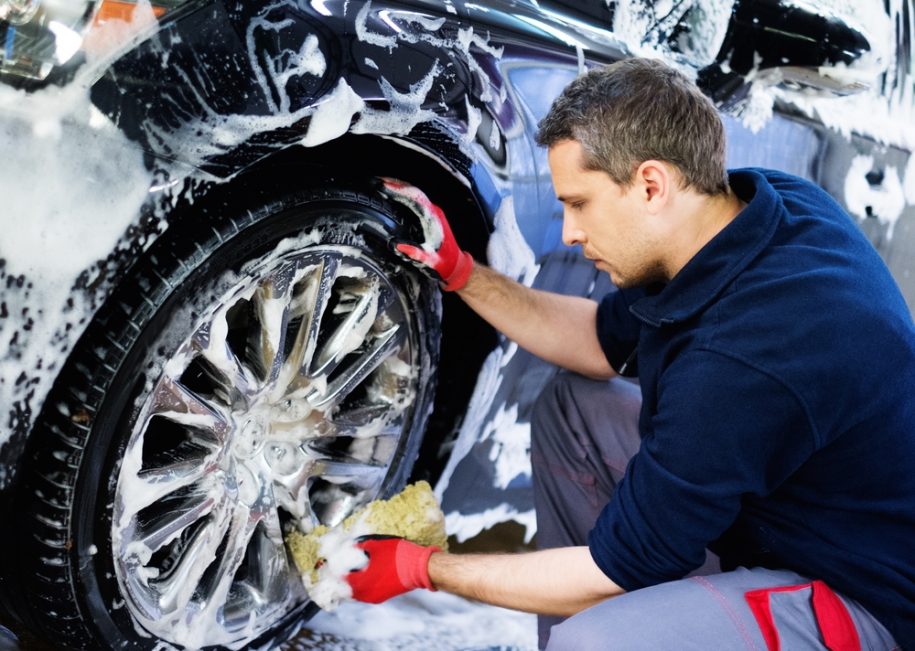 nine0003
nine0003
In general, cuts or punctures, unlike punctures, are considered non-repairable, since the integrity of the frame is violated. And breakdowns do occur on the go, when the tire abruptly loses pressure and has time to make only a few turns “on the rims” before it comes to a complete stop. In this situation, the cord breaks and the layers of the tire are destroyed. Even if it is possible to close the hole, it is not recommended to use such a weakened tire.
Photo: Mikhail Pletsky / Russian Look
Cracks, sidewall abrasions and unprofessional tire fitting can also lead to tire problems. Cracks can occur as a result of improper storage of tires. Their danger is that moisture begins to flow to the cord, and this already renders the frame unusable. Air can also escape through cracks. Cracks cannot be repaired and tires will not last long. A tire with cracks is deformed, blistered, and may even break while driving. nine0003
Rubbing against curbs or driving on uneven roadsides can damage the tire sidewall.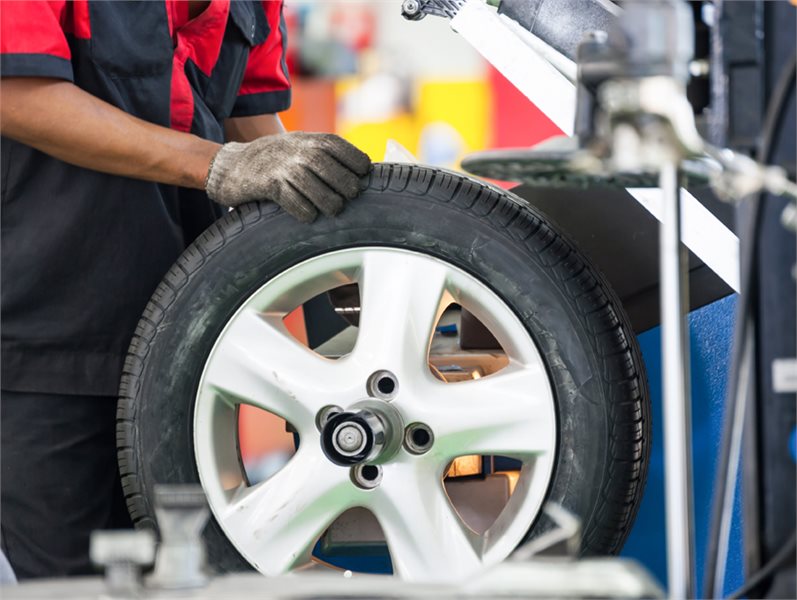 When driving like this, it is worth inspecting the tires for damage regularly. If a slight wear is found, the wheels can be swapped, which will slightly extend their service life and allow you to delay the purchase of new ones.
When driving like this, it is worth inspecting the tires for damage regularly. If a slight wear is found, the wheels can be swapped, which will slightly extend their service life and allow you to delay the purchase of new ones.
Improper fitting can damage the tire bead. In this case, the tire will lose its geometry and sit on a disc with a bevel, “eights” will be visible during rotation, and the driver will feel vibration while driving. It is impossible to repair this defect, the wheel must be changed as soon as possible, otherwise there is a risk of damage to the suspension. nine0003
How to Tires
Repair of car tires
capital, medium, current. The more complex the repair, requiring more time and materials, the more repair units it is estimated. nine0003
The cost of repairs, the required amount of repair materials and the labor intensity of filling repairs are determined by repair units.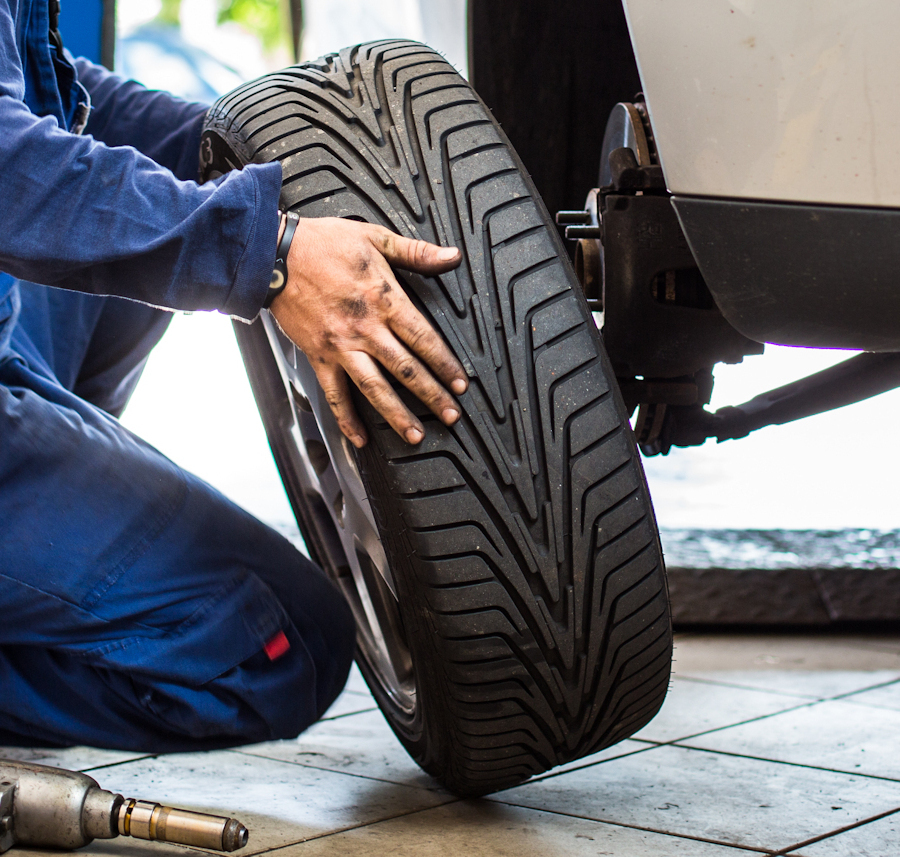 At the same time, repair units for the repair of tires and cameras differ.
At the same time, repair units for the repair of tires and cameras differ.
For a practical determination in each individual case, what number of repair units corresponds to a particular repair, special tables for cameras are used. The number of repair units depends on the type of damage, the size of the damage and the size of the tire being repaired. The number of repair units is the greater, the more complex the damage, the larger its size and the size of the tire itself, i.e., the greater the difficulty of repairing and the more repair materials are spent. nine0003
To repair a through damage located along the tread, a tire 12.00-20 of a MAZ-205 car with a size of 100 mm will require more materials and time than for the same repair of a tire of a Moskvich 5.00-16 car. Therefore, in the table for the first case, 12 repair units are indicated, and for the second - only 3 repair units. To determine the magnitude of damage, its length is measured in millimeters in the longest direction. If the repaired tire or tube has several damages, then the amount of repair is determined as the sum of the volumes of individual damages. nine0003
To determine the magnitude of damage, its length is measured in millimeters in the longest direction. If the repaired tire or tube has several damages, then the amount of repair is determined as the sum of the volumes of individual damages. nine0003
Let's say a 6.50-20 tire has two through damages along the tread, one of which is up to 100 mm in size and the second is up to 200 mm.
In accordance with the table above, the repair volume of the first damage is estimated at 3 repair units, the second - at 5 units. The total amount of repairs will be 8 repair units.
2. Tire repair
The technological process of tire repair consists of preparing damaged areas for applying repair materials, applying repair materials to damaged areas and curing the repaired areas. nine0003
Washing is the first preparatory operation for tire repair. This time-consuming operation is completely mechanized with the help of special washing machines. With a small amount of work, washing can be done manually in the bath using a hose and a stiff brush.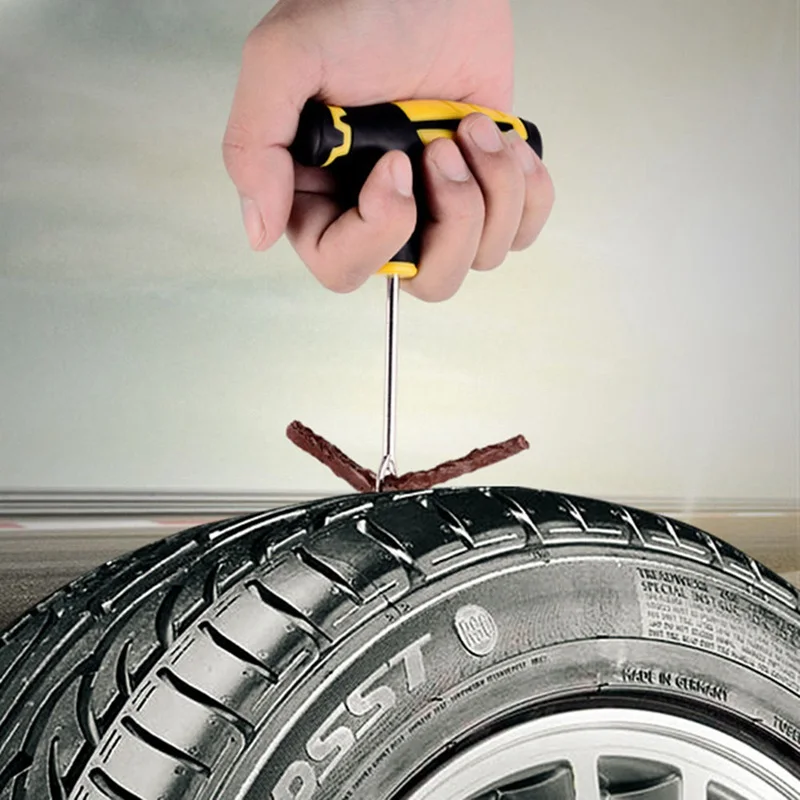
Drying is necessary to avoid the porosity of the applied repair materials during vulcanization and the deterioration of their adhesion to the tire due to the presence of moisture. Dry tires with exposed cords always have a certain amount of moisture, since the cords absorb it like wicks. nine0003
For drying, the preparation section has a drying chamber maintained at a temperature of 40-60°C by steam or hot water heated radiators. Tires are located on racks no closer than 1 m from heating devices and are kept in the chamber for 24 hours. The chamber is equipped with natural or forced ventilation.
If a drying chamber is not available, the tires can be dried over the curing equipment on hangers. Drying time in this case increases to 2-3 days. nine0003
Notching is used to remove delaid and damaged areas of rubber. The notch creates the necessary contact area of the repaired area of the tire with repair materials and patches. The following methods of cutting rubber and cord around the damage are used: internal cone, external cone, counter cone and framed.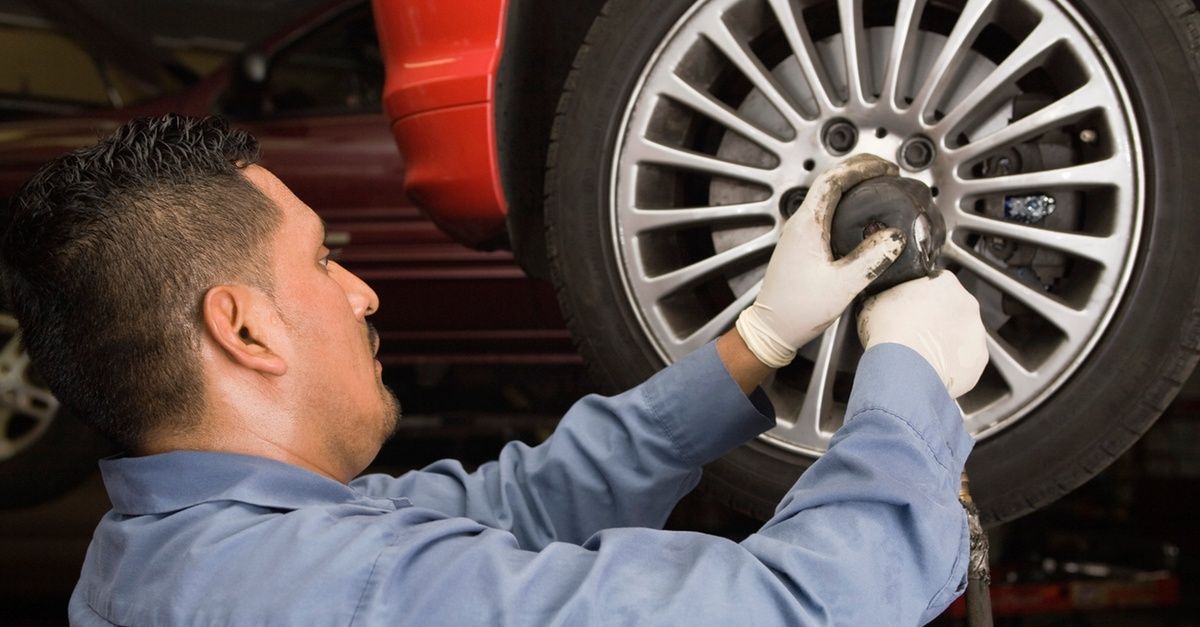
Cutout boundaries are determined based on the removal of all damaged and delaminated sections of rubber and cord, and also taking into account a rather sloping cut angle. nine0003
For cutting with an inner cone, the tire is mounted on the bridge of the expander and its sides are moved apart. The damaged areas of the tire are cut out from its inner side, beveling the edges towards the center to the full depth of the breakthrough. The bevel angle, depending on the nature of the breakthrough, is allowed from 30 to 90°.
For cutting with an outer cone, the tire is put on a blank or placed on a workbench. With a knife moistened with water, the rubber is cut from the edges to the center at an angle of 30-40°, without increasing the breakthrough window. nine0003
To cut with an opposite cone, the carcass is cut from the inside of the tire to the cushion layer with an inner cone, and from the outside, the tread and cushion layer are cut with an outer cone.
For frame cutting, the tire is placed on the reamer bridge or on a workbench with spacers inserted between the beads. Cutting consists in consecutive step removal - layers of a cord. The size of the steps in the direction of the threads is 20 mm and across the cord threads is 10 mm. The last lower layer of the cord is not removed. The distance from the breakthrough window to the border of removing the first layer of the cord for four-layer tires in the direction of the threads is 40 mm and across the threads is 80 mm, for six-layer tires, respectively, 70 and 110 mm. nine0003
Cutting consists in consecutive step removal - layers of a cord. The size of the steps in the direction of the threads is 20 mm and across the cord threads is 10 mm. The last lower layer of the cord is not removed. The distance from the breakthrough window to the border of removing the first layer of the cord for four-layer tires in the direction of the threads is 40 mm and across the threads is 80 mm, for six-layer tires, respectively, 70 and 110 mm. nine0003
Fig. Fig. 1. Schemes for cutting out damage: A - with an internal cone; B - outer cone; B - counter cone; G - in a frame; 1 - tire tread; 2 - cushion layer; 3 - frame; 4 - inner cone; 5 - outer cone; 6 - counter cone
Fig. 2. Carving tool:
1 - knife with a long blade; 2 - curved knife; 3, 4 - special knives; 5 - hook; 6 - pliers
The cutting tool used is shown in fig. 2. Roughening is necessary to increase the strength of the connection between the patch and the tire by increasing adhesion and deeper penetration of the adhesive.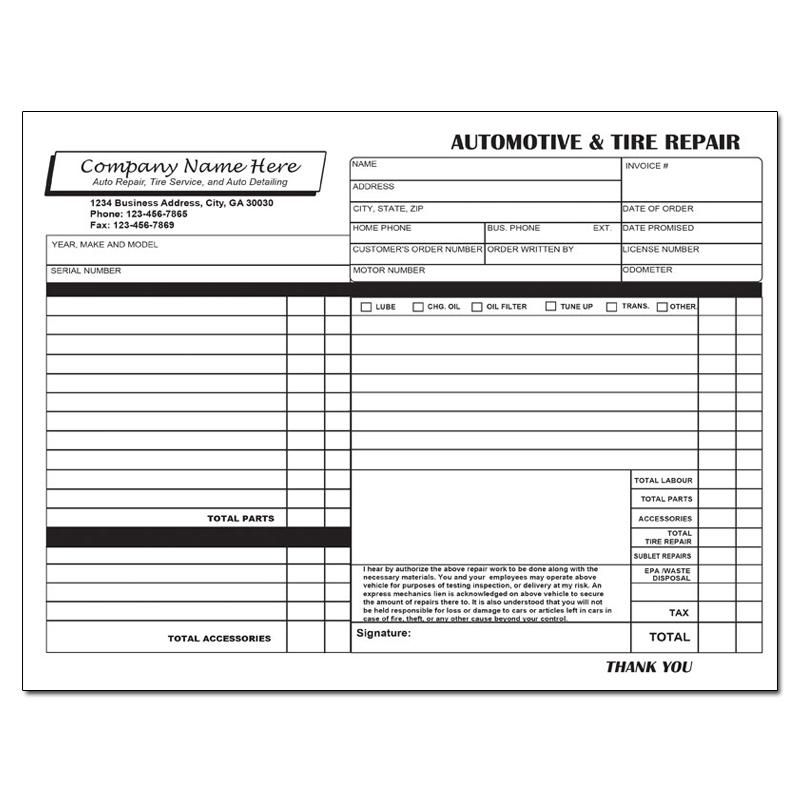 Are subjected to roughening nine0003
Are subjected to roughening nine0003
surfaces of cut damages and adjacent surfaces of external rubbers or cords. In the beginning, damage is roughened from the inside of the tire, and then from the outside.
The dimensions of the roughened inner surface of the tire depend on the size of the damage after cutting and the dimensions of the tire itself and are set in such a way that they are larger than the dimensions of the applied cuffs and patches K
The carcass and padding areas are roughened with a wire disc brush and the rubber surface areas are roughened with a disc rasp. The brush moves in the direction of the cord threads from the edges to the center of the damage. Internal buffing is conveniently performed using a flexible shaft outboard motor. The roughened areas should have an even pile, a matte surface, without signs of burning and traces of a cut with a knife; frayed cords must be cut off. nine0003
Local dust extractors must be installed at each roughening workplace. Personnel working on roughing machines must wear safety goggles. The roughing tool must be protected by a metal casing.
Personnel working on roughing machines must wear safety goggles. The roughing tool must be protected by a metal casing.
Preparation of damaged areas for applying repair materials ends with quality control of the work performed.
For easy inspection inside the tire, its beads are pre-expanded and spacers are placed between them.
The follow-up inspection checks for missing damage or unroughened areas; the quality of the roughened surface and its dimensions are checked; the quality of cutting damage is checked, after which the tire can be subjected to subsequent repair operations.
The adhesive is applied to damaged areas with a fine bristle brush in a uniform thin layer, without smudges and gaps, so that it penetrates well into the roughened surfaces.
Apply liquid adhesive at a concentration of 1:8 to the buffed areas, first on the inside and then on the outside of the tire. nine0003
The smeared tire, cuff or cuff is placed in a dryer at a temperature of 30-40 ° for 25-30 minutes. or they are dried in the workshop for at least 60 minutes. After the drying time has elapsed, a second smearing with glue with a concentration of 1: 5 is carried out and drying is carried out in the same way.
or they are dried in the workshop for at least 60 minutes. After the drying time has elapsed, a second smearing with glue with a concentration of 1: 5 is carried out and drying is carried out in the same way.
Rubber, rubberized fabrics and plasters are smeared with glue at a concentration of 1:8 if they have lost their original adhesiveness, which cannot be restored by refreshing. In the presence of stickiness, they only refresh. nine0003
For refreshment, the surface of repair materials and plasters is wiped with a swab of calico soaked in gasoline. After refreshing, repair materials are placed under an exhaust hood until the smell of gasoline is completely removed.
Electric lighting of the room where oiling and drying is carried out must be equipped with closed wiring and hermetic fittings, and electric motors must be explosion-proof. During drying of glued tires and repair materials, it is necessary to turn on the exhaust ventilation. nine0003
Sealing of cut out, glued and dried damages with repair materials is carried out at a separate workplace using the tool shown in fig.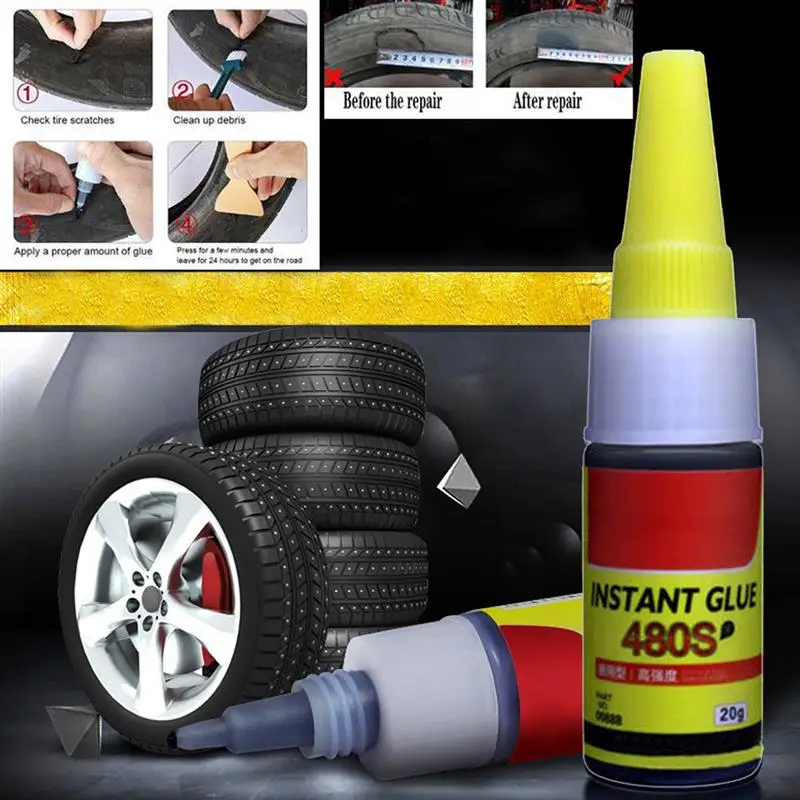 3.
3.
Fig. 3. Sewing tool:
1 - knife; 2, 3, 6 - rollers; 4 - scissors; 5 - awl
Before embedding, spacers are installed between the tire beads and the surface smeared with glue is refreshed with gasoline. Spacers must not distort the profile of the tire due to excessive bead expansion. The tire is repaired first from the inside, and then from the outside. Cuffs, patches and cuffs are made with a different number of layers of cord in them and different sizes, which allows them to be selected depending on the size of the damage and the size of the repaired tire. nine0003
So, for example, to repair a through damage with a size of 80 mm in a tire 6.50-20, it is necessary to apply a six-layer plaster with a size of 330 X 330 mm at the breakthrough site. If such a tire is repaired through damage, for example, 170 mm, then in this case it is necessary to apply a six-layer cuff with a size of 450 mm. Finally, if a tire with the same through damage is being repaired, but the tire itself is larger, 7.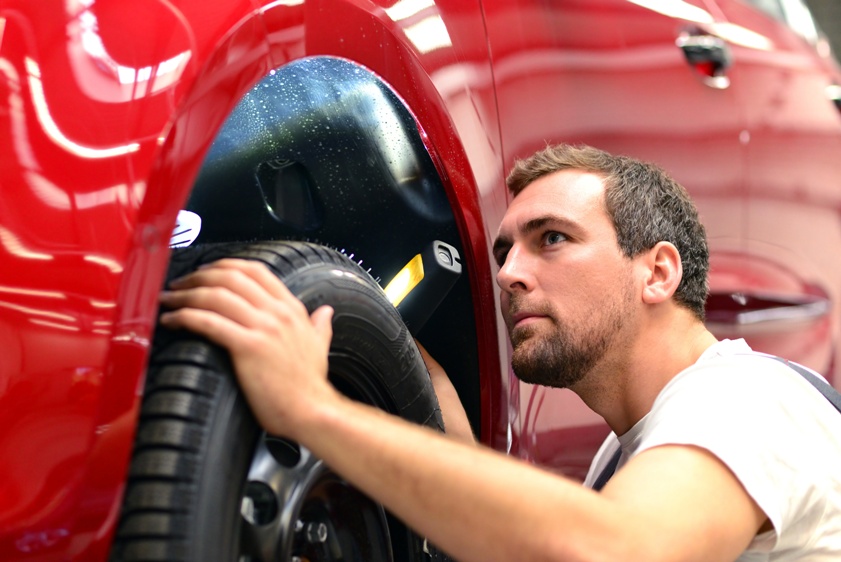 50-20, then in this case it is necessary to apply not only a six-layer cuff measuring 550 mm, but a four-layer cuff measuring 400 mm must be applied before it and on top his cuff. One cuff in this case does not provide the required strength. For the selection of cuffs, patches and cuffs, there are tables in which they are provided for all possible repair cases. nine0003
50-20, then in this case it is necessary to apply not only a six-layer cuff measuring 550 mm, but a four-layer cuff measuring 400 mm must be applied before it and on top his cuff. One cuff in this case does not provide the required strength. For the selection of cuffs, patches and cuffs, there are tables in which they are provided for all possible repair cases. nine0003
Sealing through damages begins with lining their walls with interlayer rubber 0.7 mm thick. This rubber should cover the convex side of the cuff, both sides of the cuff and the stepped side of the patch. This is necessary to ensure a reliable connection of the applied repair materials with the tire.
After that, the cut sections of the tread and cushion layer are filled with tread rubber, and the cut sections of the carcass are filled with interlayer rubber 2 mm thick. nine0003
Plasters, cuffs or cuffs are applied in such a way that their centers coincide with the center of damage and the direction of the threads of the outer layer of the tire corresponds to the direction of the threads of the outer layer of the patch or cuff.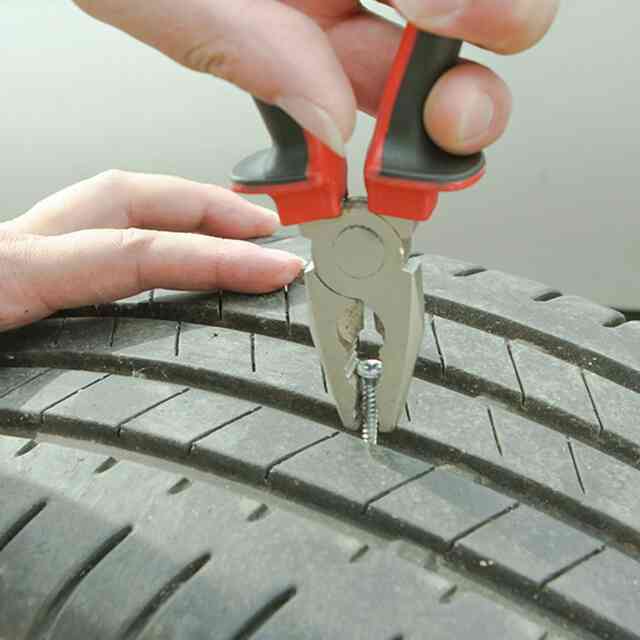 The applied patches and cuffs are rolled on with a roller, and their edges are covered from above with a 0.7 mm thick interlayer rubber tape.
The applied patches and cuffs are rolled on with a roller, and their edges are covered from above with a 0.7 mm thick interlayer rubber tape.
To prevent the formation of air bubbles, the repair material is not applied over the entire surface, but gradually from one end with a slight tension of the material and rolling with a roller. The resulting air bubbles are pierced with an awl. nine0003
When sealing sections of the frame cut into the frame, a strip of interlayer rubber 0.7 mm thick, 15-20 mm wide is applied to the entire stepped frame and rolled with a roller. Then, in accordance with the dimensions of the removed layers of the cord, new patches pre-cut from the cord are inserted. On top of the layers of cord inserted into the frame, the last layer is superimposed, overlapping the edges of the frame by 35-50 mm on each side.
When repairing external damage to the tire, the entire repaired area is pasted over with interlayer rubber 0.7 mm thick, and the recesses along the frame are filled with interlayer rubber 2 mm thick. The cut out section of the tread is filled with pieces of tread rubber sized according to the size and shape of the damage. When sealing non-through damage to cargo tires, all operations are performed in the same way as when sealing through damage. nine0003
The cut out section of the tread is filled with pieces of tread rubber sized according to the size and shape of the damage. When sealing non-through damage to cargo tires, all operations are performed in the same way as when sealing through damage. nine0003
Before the tires are vulcanised, the quality of the embedding is established.
Tire must not show unsealed damage; all superimposed repair materials must be tightly rolled and cover the damage to the required amount; the outer sections of the applied repair rubber should be 2-3 mm above the surface of the tire, and cut off along the edges to the level of the tire; the sides and sidewalls of the tire after repair should not be thickened due to excessively applied repair material. nine0003
Vulcanizing repaired areas is one of the most important operations in tire repair.
The essence of vulcanization lies in the fact that when heated to a certain temperature, a physical and chemical process occurs in unvulcanized rubber, as a result of which the rubber acquires elasticity, strength, elasticity and other necessary qualities.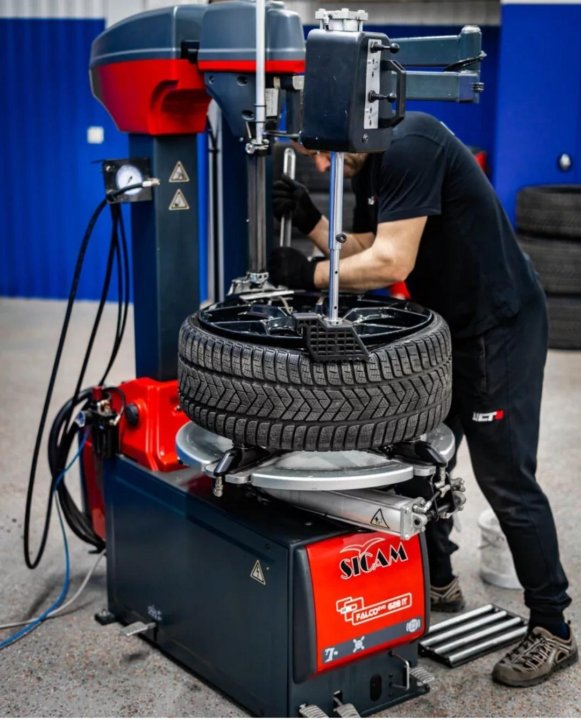
When two pieces of rubber are vulcanized and glued together with a rubber adhesive, they form a monolithic structure and the strength of their connection does not differ from the adhesion strength of the base material inside each piece. At the same time, to ensure the necessary strength, the pieces of rubber must be pressed - pressed 1 under a pressure of 5 kg / cm2. nine0003
In order for the vulcanization process to take place, it is not enough to produce only heating to the required temperature, i.e. to 143 + 2 °; the vulcanization process does not take place instantly, so heated tires must be held for a certain time at the vulcanization temperature.
Vulcanization can also occur at temperatures lower than 143°C but takes longer. So, for example, when the temperature drops by only 10 ° against the indicated one, the vulcanization time should be doubled. In order to reduce the time for preheating during vulcanization, electric cuffs are used that allow heating simultaneously from both sides of the tire, while reducing the vulcanization time and improving the quality of the repair.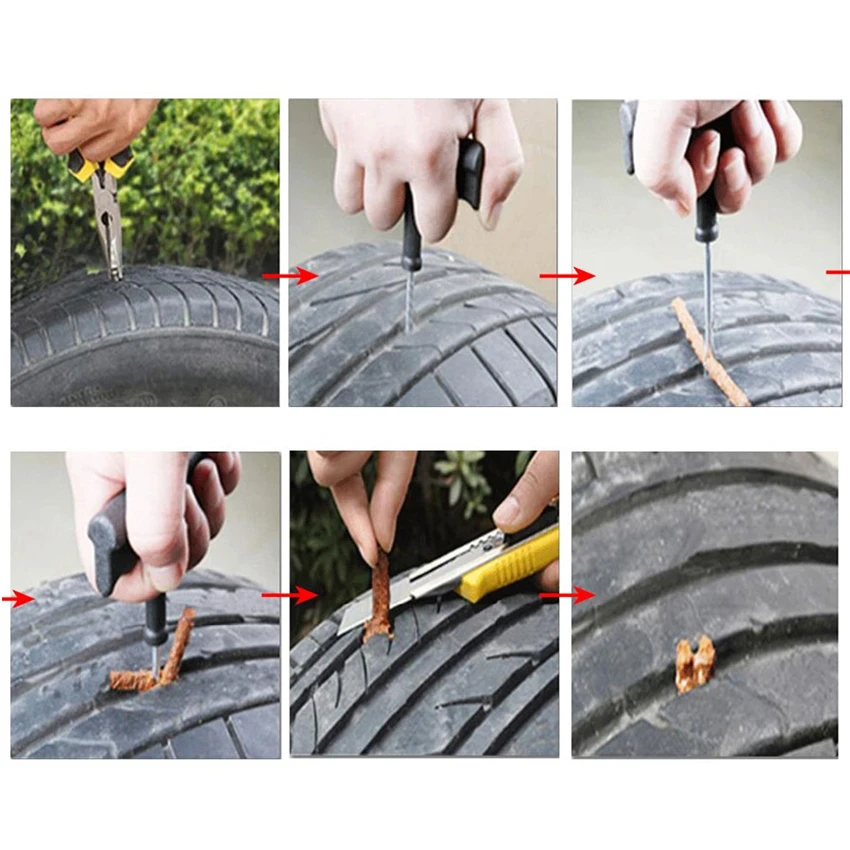 With one-sided heating of tires of large thickness, overvulcanization of rubber sections in contact with the vulcanization equipment occurs, and undervulcanization of rubbers on the opposite side. The vulcanization time, depending on the type of damage and the size of the tire, ranges from 30 to 180 minutes for tires and from 15 to 20 minutes for tubes nine0003
With one-sided heating of tires of large thickness, overvulcanization of rubber sections in contact with the vulcanization equipment occurs, and undervulcanization of rubbers on the opposite side. The vulcanization time, depending on the type of damage and the size of the tire, ranges from 30 to 180 minutes for tires and from 15 to 20 minutes for tubes nine0003
Stationary vulcanizing apparatus model 601, produced by the GARO trust, is used for vulcanization in vehicle fleets.
The working set of the vulcanization apparatus includes corsets for sectors, corset tightening, tread and side profile linings, clamps, pressure pads, sandbags, mattresses.
With a steam pressure in the boiler of 4 kg/cm2, the required surface temperature of the vulcanizing equipment is 143’+2°. At a pressure of 4.0-4.1 kg!cm2, the safety valve should open. nine0003
Vulcanizers must be inspected by a Boiler Inspector before they are put into service.
Internal damage to tires is vulcanized on sectors, external damage is cured on slabs using profile linings. Through damage (in the presence of electric cuffs, they are vulcanized on a plate with a profile lining, in the absence of electric cuffs separately: first from the inside on the sector, then from the outside on a plate with a profile lining.
Through damage (in the presence of electric cuffs, they are vulcanized on a plate with a profile lining, in the absence of electric cuffs separately: first from the inside on the sector, then from the outside on a plate with a profile lining.
Electrocuff consists of several layers of rubber and an outer layer of rubberized chafer, in the middle of which is placed a nichrome wire heating coil and a thermostat to maintain a constant temperature (150°). nine0003
Fig. 4. Stationary vulcanizing apparatus GARO model 601:
1 - sector; 2 - side plate; 3 - boiler-steamer; 4 - small clamps for cameras; 5 - bracket for cameras; 6 - pressure gauge; 7—clamp for tires; 8 - firebox; 9 - water gauge glass; 10 - manual plunger pump; 11 - suction tube
Before vulcanization mark the boundaries of the area to be repaired. To eliminate sticking, powder it with talc, as well as a sand bag, an electrocuff and vulcanization equipment (sectors, profile linings, etc.) in contact with the tire.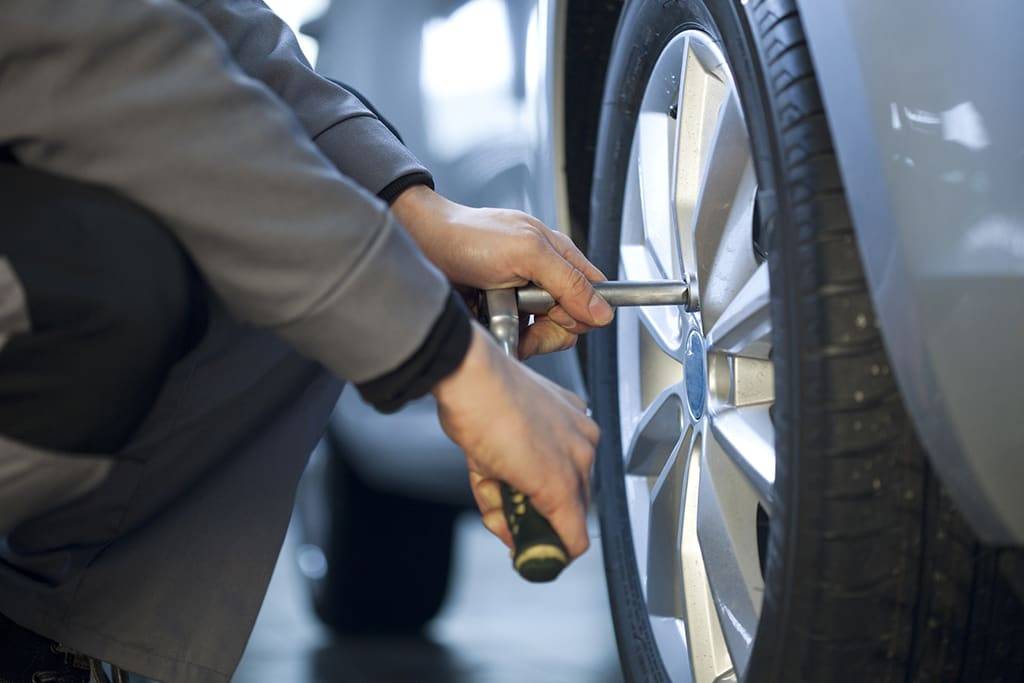 nine0003
nine0003
When vulcanizing on a sector, pressing is achieved by tightening the corset, and when vulcanizing on a plate, using a sandbag and a clamp.
Profile linings (tread and bead) are selected according to the repaired area of the tire and its size.
The electro-cuff during vulcanization is located between the tire and the sandbag.
The start and end times of vulcanization are marked with chalk on a special board installed near the vulcanization equipment. nine0003
Refurbished tires must meet the following requirements:
1) tires must not have non-refurbished spaces;
2) the inner side of the tire must be free of bulges and traces of delamination of patches, undervulcanization, folds and thickenings that impair the operation of the chamber;
3) Rubber patches applied to the tread or sidewall must be fully vulcanized to a hardness of 55-65 Shore;
4) tread areas over 200 mm in size retread during repair must have a pattern identical to the entire tread of the tire; the "All-terrain vehicle" type pattern must be applied regardless of the size of the retread area; nine0106 5) the shape of the tire beads must not be distorted;
6) thickenings and depressions that distort the outer dimensions and surface of the tire are not allowed;
7) the repaired sections must not have backlogs; it is allowed to have shells or pores up to 20 mm2 in area and up to 2 mm deep in the amount of not more than two per square decimeter;
8) the quality of tire repair must ensure their guaranteed mileage after repair.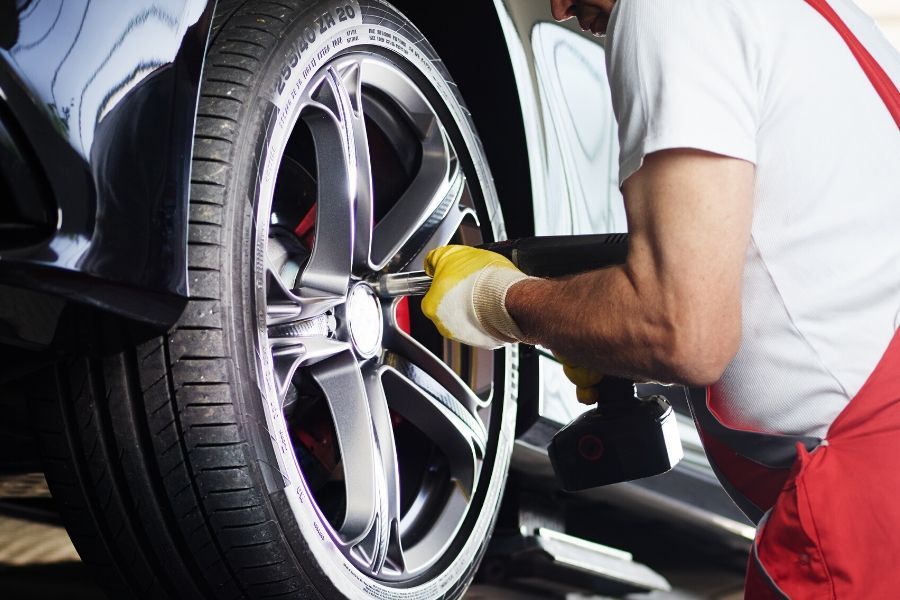
3. Camera repair
Similar to the tire repair workflow, the tube repair workflow consists of preparing damaged areas for patching, patching, and curing. nine0003
The scope of work for preparing damaged areas for patching includes: identifying hidden and visible damage, removing old unvulcanized patches, rounding edges with sharp corners, roughening the rubber around the damage, cleaning the chambers from roughing dust.
Fig. 5. Sector for vulcanization of tires:
1 - sector; 2 - tire; 2 - corset; 4 - puff
Fig. 6. Vulcanization of bead damage on the bead plate:
1 - tire; 2 - side plate: 3 - side lining; 4 - sandbag; 5 - metal plate; 6 - clamp
Visible damage is identified by visual inspection in good light and outlined with an indelible pencil.
To detect hidden damage, i.e. small punctures that are invisible to the eye, the inflated chamber is immersed in a bath of water, and the puncture site is determined by emerging air bubbles, which is also outlined with an indelible pencil. The damaged surface of the chamber is subjected to roughening with a carborundum stone or a wire brush at a width of 25-35 mm from the damage boundaries, preventing the ingress of roughing dust into the interior of the chamber. Rough areas are cleaned with a brush. nine0003
The damaged surface of the chamber is subjected to roughening with a carborundum stone or a wire brush at a width of 25-35 mm from the damage boundaries, preventing the ingress of roughing dust into the interior of the chamber. Rough areas are cleaned with a brush. nine0003
Repair materials for repairing tubes are: non-vulcanized tube rubber 2 mm thick, tube rubber unsuitable for repair, and rubberized chafer. Raw, unvulcanized rubber seals all punctures and tears up to 30 mm in size. Rubber for cameras repairs damages of more than 30 mm. This rubber should be elastic, without cracks and mechanical damage. Raw rubber is refreshed with gasoline, smeared with glue with a concentration of 1: 8 and dried for 40-45 minutes. The chambers are roughened with a wire brush or carborundum stone on a roughening machine, after which they are cleaned of dust, refreshed with gasoline and dried for 25 minutes, then coated twice with glue with a concentration of 1: 8 and dried after each spread for 30-40 minutes at a temperature of 20 -30°.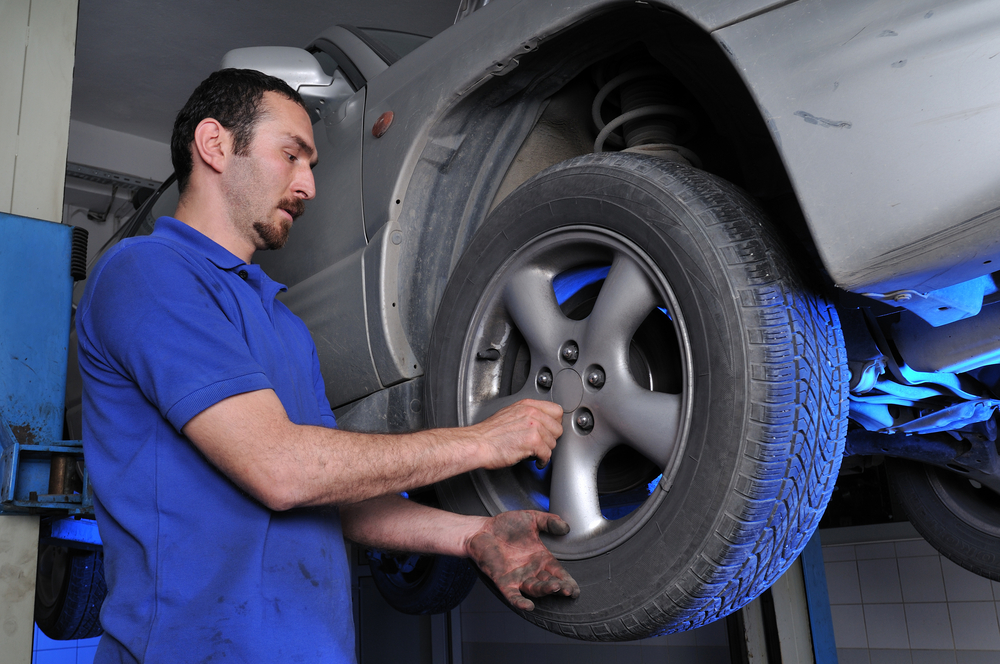 The chafer is smeared once with glue with a concentration of 1: 8, then dried. nine0003
The chafer is smeared once with glue with a concentration of 1: 8, then dried. nine0003
The patch is cut in such a way that it overlaps the hole by 20–30 mm on all sides and is 2–3 mm smaller than the boundaries of the roughened surface. It is superimposed on the repaired section of the chamber with one side and gradually rolled with a roller over the entire surface, so that there are no air bubbles between it and the chamber. When applying patches, make sure that the surfaces to be bonded are completely clean, free from moisture, dust and grease.
In cases where the chamber has a gap greater than 500 mm, it can be repaired by cutting out the damaged piece and inserting in its place the same piece from another chamber of the same size. This repair method is called camera docking. The width of the joint must be at least 50 mm. nine0003
Damaged external threads on valve bodies are restored with dies, and internal threads with taps.
If it is necessary to replace the valve, it is cut out together with the flange and another valve is vulcanized in the new place. The location of the old valve is repaired as normal damage.
The location of the old valve is repaired as normal damage.
Vulcanization of damaged areas is carried out on a model 601 vulcanizing apparatus or on a GARO vulcanizing apparatus for vulcanizing chambers. Curing time for patches is 15 minutes and for flanges 20 minutes at 143+2°C. nine0003
During vulcanization, the chamber is pressed with a clamp through a wooden strip to the surface of the board. The overlay should be 10-15 mm larger than the patch.
If the area to be repaired does not fit on the slab, then it is vulcanized in two or three successive installations (betweens).
After vulcanization, the sags on the non-roughened surface are cut off with scissors, and the edges of the patches and burrs are removed on the stone of the roughing machine.
Repaired cameras must meet the following requirements:
1) a chamber filled with air must be airtight both in the body of the chamber and in the place where the valve is attached;
2) patches must be tightly vulcanized, free of bubbles and porosity, their hardness must be the same as the rubber of the tube;
3) the edges of patches and flanges must not have thickenings and delaminations;
4) The valve thread must be intact.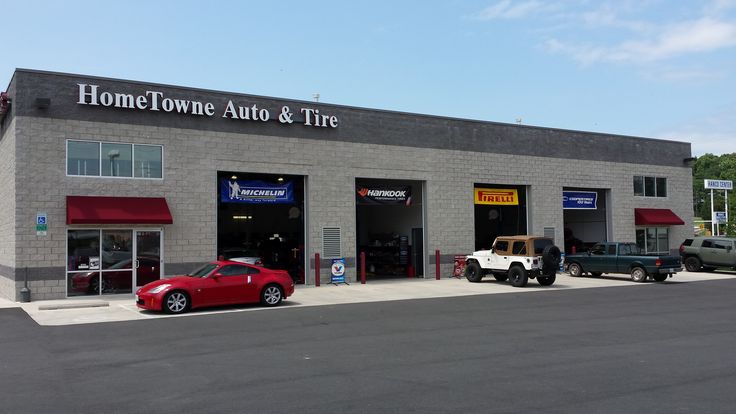
4. Repair of tires and tubes on the road
Repair of tires on the road consists of applying temporary plasters or cuffs on the inside, glued with non-vulcanizing rubber glue. The disadvantage of this repair is that the applied patches do not adhere well when the tire is heated, so it is a temporary repair and serves to drive to the garage, where the tire must be repaired by vulcanization. nine0003
The rupture site and adjacent areas are thoroughly cleaned of dirt, dust (dry if moisture is present) and roughened with a metal brush or rasp. The roughness boundaries should be no closer than 100 mm from the edges of the damage. A plaster or cuff is selected in size with a roughened area, the surface of which is roughened from the convex side. The tire is smeared twice with glue with a concentration of 1: 8, and the cuff or plaster once.
The glue is considered dry when the smell of gasoline disappears. After applying cuffs or patches, their edges are beveled with a knife for a smooth transition and powdered with talc on top.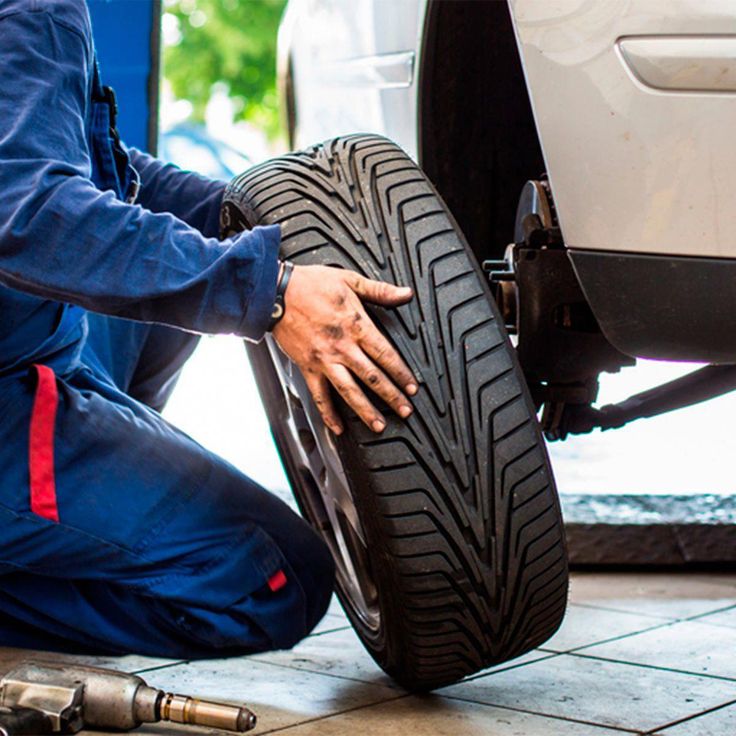 nine0003
nine0003
Tire punctures can be qualitatively repaired on the road and in stationary conditions with the help of the so-called rubber fungi, which in their shape resemble a mushroom with a conical cap and a thin stem.
The fungus is introduced into the puncture with a foot until its cap fits snugly against the inner surface of the tire. The hat is rolled with a metal roller and powdered with talc, and the end of the leg protruding outward is cut off to a level with the surface of the tire.
Chambers can be repaired en route with non-vulcanizing adhesive and rubber patches or with vulcanized briquettes. In the first case, the repair will be temporary, in the second case, the quality of the repair may be the same as in stationary repair. nine0003
When repairing with non-vulcanizing adhesive, cleaning and roughening the surface of the chamber, smearing with glue, patch sizes and their application are carried out, as in stationary conditions.
When repairing with vulcanizing briquettes, the surface of the chamber around the damage is roughened with a rasp, emery cloth or a wire brush. If the size of the damage is more than 5 mm, then its edges are cut with a knife or scissors and the hole is given a round or oval shape; then a patch is cut out of the scrap chamber so that it fits snugly in the cut hole. One side of the patch is subjected to roughening, after which the raw rubber patch is pressed against the bottom of the metal cup, so that its edges are everywhere equally spaced from the edges of the cup. Pressing the patch to the bottom of the cup, you can not touch it with your hands - you must use cellophane, which is then removed from the patch. Buffed areas and raw rubber patches must be protected from dust, dirt and moisture. The size of the patch should cover the camera damage from all sides by 15 mm. Then the camera is placed on the platform of the clamp with the roughened surface up. The vulcanization briquette is applied with a rubber patch to the chamber, after which a small area of the combustible mass is loosened and set on fire. The amount of mass and the rate of its combustion are selected so as to provide the required temperature and time of vulcanization.
If the size of the damage is more than 5 mm, then its edges are cut with a knife or scissors and the hole is given a round or oval shape; then a patch is cut out of the scrap chamber so that it fits snugly in the cut hole. One side of the patch is subjected to roughening, after which the raw rubber patch is pressed against the bottom of the metal cup, so that its edges are everywhere equally spaced from the edges of the cup. Pressing the patch to the bottom of the cup, you can not touch it with your hands - you must use cellophane, which is then removed from the patch. Buffed areas and raw rubber patches must be protected from dust, dirt and moisture. The size of the patch should cover the camera damage from all sides by 15 mm. Then the camera is placed on the platform of the clamp with the roughened surface up. The vulcanization briquette is applied with a rubber patch to the chamber, after which a small area of the combustible mass is loosened and set on fire. The amount of mass and the rate of its combustion are selected so as to provide the required temperature and time of vulcanization.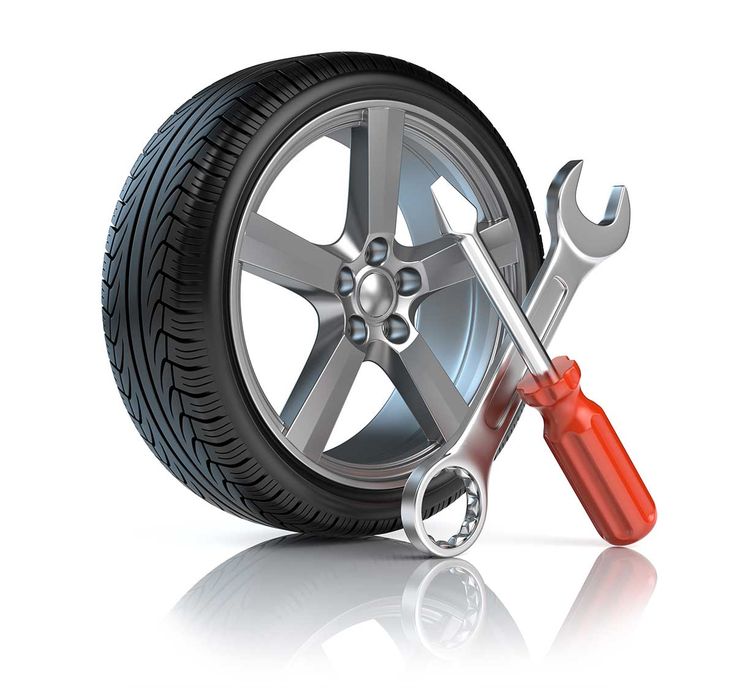 The clamp should be removed after 10-15 minutes. after complete combustion of the combustible mass; during this time, the vulcanization process is completed. nine0003
The clamp should be removed after 10-15 minutes. after complete combustion of the combustible mass; during this time, the vulcanization process is completed. nine0003
For the repair of tires and tubes on the road, special first-aid kits (AP-4) are produced, which contain all the necessary materials and tools, except for a clamp.
Fig. 7. Manual clamp:
1 — clamp body;
2 - clamping screw;
3 - clamping sprocket
—
Timely and high-quality repair increases the mileage of car tires and reduces the cost of their operation. A prerequisite for high-quality tire repair is the thoroughness of each repair operation. The technological process of repairing tires of the following operations: acceptance for repair, washing and from the service station preparing damaged areas for repair, 1st inspection, spreading with glue and drying, 2nd control trolling repairing damage, 3rd control inspection, vulcanization, finishing, final control. Tires that have more than two layers of carcass worn around the entire circumference, tires with elongated beads and broken wire in the beads, with hardened and cracked rubber as a result of aging, with delaminations or through carcass breaks of more than 250 mm for tires of trucks and more than 200 mm for passenger car tires, as well as tires with rubber impregnated with kerosene, oil or oil.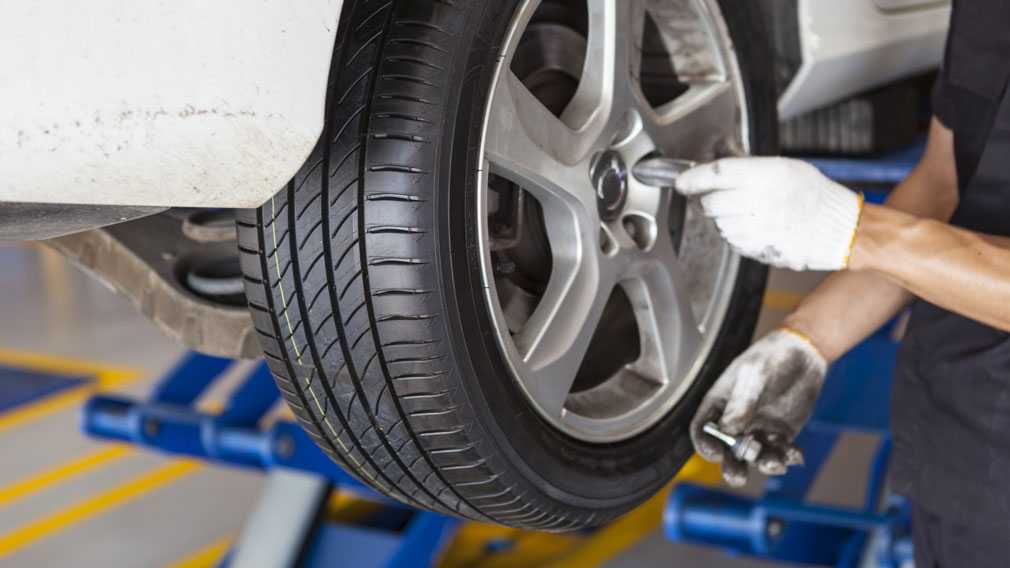 nine0003
nine0003
Fig. 8. Ways to repair through tire damage: I - inner cone; II - external cone; III - oncoming cone) IV - in the frame.
Tires are washed in a special bath or with a hose, a stiff brush and a rag. After washing, the tire must be thoroughly dried in drying chambers at a temperature of 40-60 ° C for 24-36 hours. In the absence of a drying chamber, the tire can be dried on special hangers located above the vulcanization equipment.
Drying has an exceptionally great influence on the quality of tire repair. When repairing insufficiently dried tires, the quality of their vulcanization deteriorates sharply due to the formation of vapor locks.
When preparing a tire for repair, damaged areas are cut out in accordance with the intended repair method and roughened. Depending on the size of the through damage, the “in-frame” repair method is used for cars and the “inner”, “outer” or “oncoming” cone for trucks. Experience has shown that, in addition to the patch, it is advisable to use on the inside and cuffs, which protects the carcass from destruction and increases the service life of repaired tires. nine0003
nine0003
Nail through holes are repaired with the help of spa. social rubber fungus.
For easy access to the inside of the tire when cutting through damage, mechanical guides are used. rawl or pneumatic expanders. Damaged edges are cut out with a special knife at an angle of 30-40°. The areas prepared for repair are subjected to roughening inside and outside the tire.
Roughing provides strong adhesion of repair materials to the surface of the tire. For internal roughening, a special device is used, consisting of an electric motor with a power of 0.8–1.0 kW with a flexible shaft, on which a steel disk brush with a diameter of 100–110 mm and a width of 30 mm is fixed. ninewe pour a concentration of 1:5 (one part of glue to 5 parts of gasoline), and the surface of the patch with glue of a concentration of 1:10.
After each lubrication, the applied adhesive layer is dried at a temperature of 30-40 °C for 35-50 minutes. The glued and dried tire is subjected to a second inspection, and then the damage is repaired and a third inspection and vulcanization is carried out.